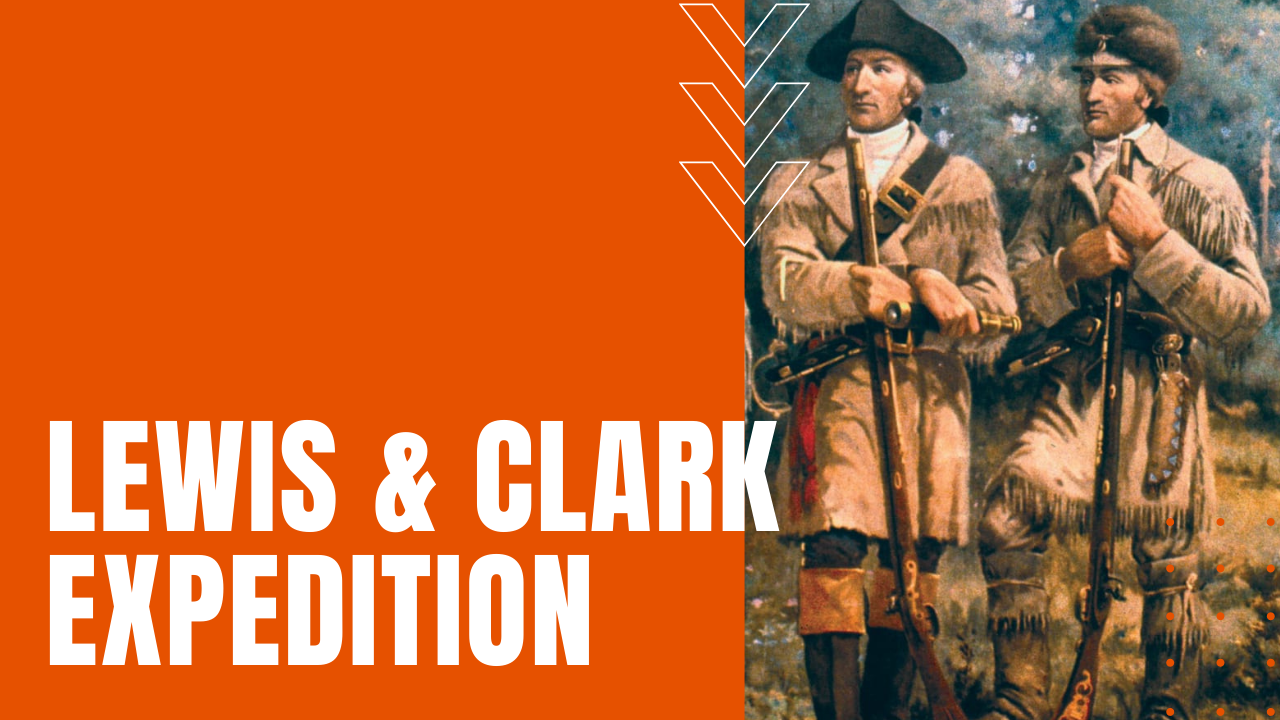Lewis and Clark Expedition: Two-Years of Western U.S. Exploration

After President Thomas Jefferson successfully negotiated the Louisiana Purchase from France, Jefferson tasked his personal secretary, Meriwether Lewis, to explore the nation’s newest lands west of the Mississippi.
Lewis chose his good friend William Clark to co-lead the expedition, who in turn recruited and trained unmarried, healthy men at Fort DuBois during the winter of 1803.
Recruits, Missouri River, and Ruffled Feathers
On May 14th, 1804, the corps, as they became known, set out in keelboats down the Missouri River with 45 recruits, a French-Indian interpreter, a contracted boat crew and a slave named York. During their 8,000 mile journey, Lewis and Clark encountered nearly 50 Native American tribes, and while violence was rare, in September, the Teton Sioux attempted to block the group’s boats by demanding a toll, which was quickly repulsed by the corps’ superior fire power.
Fort Mandan
Wintering for five months after building Fort Mandan in present-day Washburn North Dakota, Lewis and Clark hired Toussaint Charbonneau as their new interpreter, allowing the trapper’s Shoshone wife Sacagawea to join the expedition, who would later prove invaluable to the corps’ survival.
On April 7th, 1805, Lewis and Clark sent a portion of their crew back towards St. Louis with a keelboat laden with zoological and botanical samples, maps and letters, while the remaining party pushed across the Continental Divide and the Bitterroot Mountains, which exposed the group to frostbite, hunger, dehydration, bad weather, freezing temperatures and exhaustion. Despite the brutal conditions, not a single man was lost.
Fort Clatsop
Reaching the Pacific Ocean in November of 1805, the expedition wintered near present-day Astoria Oregon, building Fort Clatsop for a second hard winter to come, before heading for home on March 23, 1806.
Splitting into two parties in Montana, Clark carved his name and date on a large rock formation along the Yellowstone River, which is now a national monument protected by the Department of the Interior. Two days later, Lewis and his party faced off with eight Blackfeet warriors near present-day Cut Bank Montana, forcing Lewis’ party to kill two warriors who attempted to steal weapons and horses.
The two teams of explorers reunited on August 12th, arriving back in St. Louis on September 23rd.
What was the Purpose of Lewis and Clark’s Expedition?
Lewis and Clark’s two-year expedition produced invaluable maps and geographical information about the American Northwest, while returning home with some 120 animal specimens and over 200 botanical samples, making the Lewis and Clark Expedition a landmark precursor, before a young nation’s all-out push for westward expansion.
Check out some additional Lewis and Clark Resources here.
